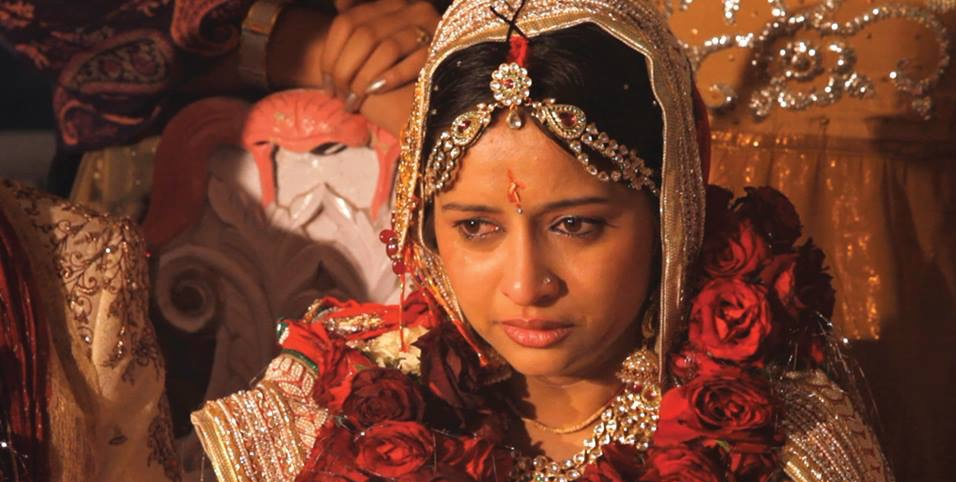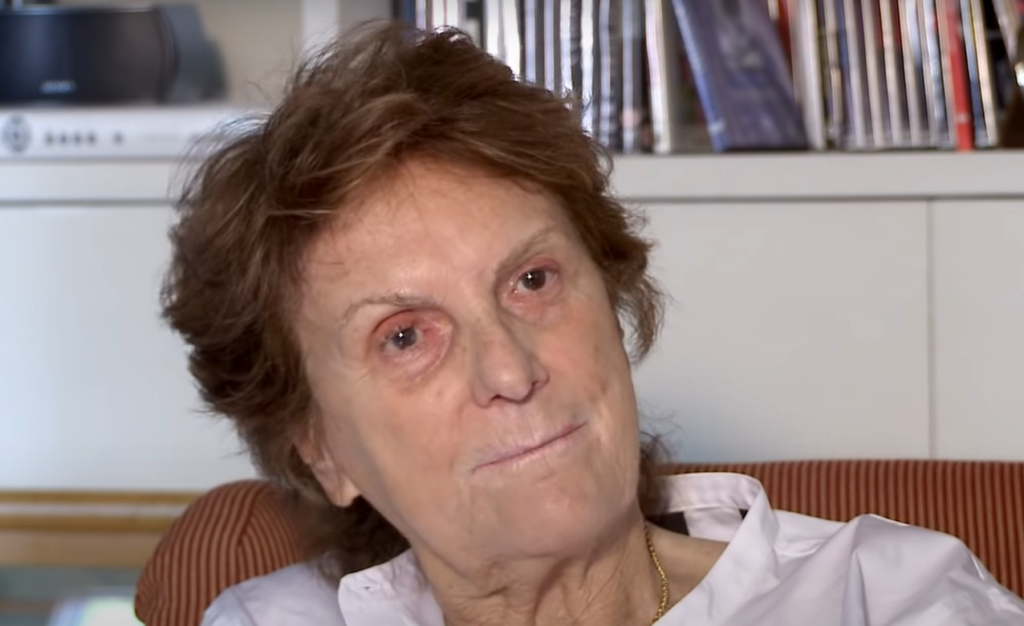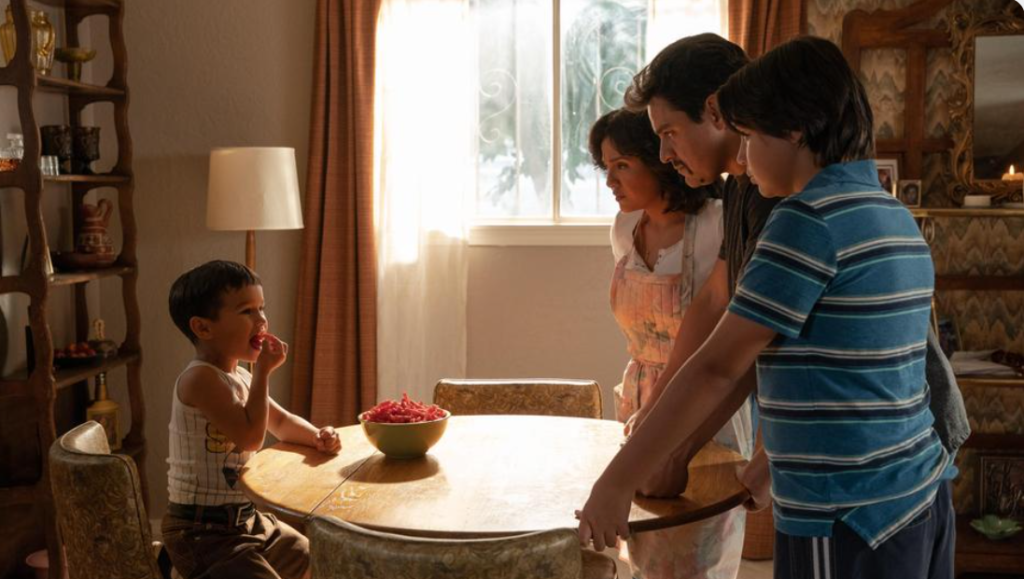Smriti Mundhra has been working in the film and television industry for over ten years. With partner Ben Rekhi, she produced “Bomb the System,” a 2004 Independent Spirit Award nominee for Best First Feature, and the award-winning feature film “Waterborne.” She also co-produced “Punching at the Sun,” an official selection of the 2006 Sundance Film Festival, as well as over one dozen award-winning short films, including the 2010 Sundance Film Festival official selection and Women In Film award-winner “New Media.”
Sarita Khurana is a director, producer, and educator. Her experimental narrative short “What Remains” was a collaboration with artist Chitra Ganesh, and has screened at festivals internationally and at the Brooklyn Museum of Art and the Goteborgs Konsthall. Khurana’s 2004 documentary “Bangla East Side” won a New York Times production grant, and was later distributed by Third World Newsreel.
“A Suitable Girl” will premiere at the 2017 Tribeca Film Festival on April 22.
W&H: Describe the film for us in your own words.
SK: The film is about matchmaking and marriage in India, and the intense pressure women feel to get married. It is about how they negotiate tradition, society, and family pressures while trying to figure out their own desires for agency, independence, and belonging.
SM: “A Suitable Girl” is a film about arranged marriage in contemporary India, told through the experiences of three young women from varied backgrounds. In a broader sense, it is an intimate look at how women negotiate their identities and sense of agency within patriarchal institutions, and the impact greater access to education and financial independence has had on those things.
W&H: What drew you to this story?
SK: One of the things that drew me to this story was the opportunity to examine the institution of marriage in India, outside of the family/personal lens. Growing up, I felt a lot of pressure from my family to get married, and conform to a traditional pathway of heteronormativity.
The film was an opportunity to examine things on my own terms, to understand what the matchmaking process looked like in India, and to understand how other Indian women dealt with these pressures. It was a way to deal with some personal subject matter in a broader more complicated and nuanced way.
SM: First and foremost, personal experience. I experienced a lot of pressure from my family to settle down and get married in my 20s, and in my community girls are raised to believe everything — career, personal fulfillment, higher education — is secondary to finding a husband.
While I rejected that notion, I could recognize the complexity and tension of wanting to be a part of a community without feeling oppressed by its expectations. Marriage is and has always been the cornerstone of Indian society and understanding how young women from our generation see themselves in this construct seemed like a vitally important thing to explore, especially as the role of women in society has changed and expanded.
W&H: What do you want people to think about when they are leaving the theater?
SK: I want people to question their own biases around arranged marriage, and the way it’s been portrayed in the media as a backwards, static institution. And I want people to think about how each of us has to negotiate our own particular pathway towards love and happiness while navigating tradition and family — I want them to realize how these are not oppositional things, but part of a complicated web of decisions.
I also want people to think about how the institution of marriage still demands that women compromise the most, and that inherently the institution is built on their backs in many ways — they must sacrifice the most by giving up careers, moving cities, leaving their families, etc. Ultimately, while women have a lot of aspirations, there are structural limitations on where they can land.
SM: I want them to think about how marriage is a complicated thing, no matter what culture you come from! Arranged marriage is not some strange, forced, and entirely oppressive system, but rather one designed for a different value system than we’re accustomed to in the west.
We hope the film will spark discussions not only about the virtues and drawbacks of arranged marriage, but also the many ways in which women of all backgrounds are expected to sacrifice to maintain a status quo in society.
W&H: What was the biggest challenge in making the film?
SK: One of the biggest challenges was financially sustaining myself over the seven years of making this film. We didn’t get paid to make this film, as all the money we raised went into the production of the film. We shot this film over four years in India because we were really committed to our character’s journeys and the story.
However, it meant that we were traveling back and forth to India, spending six months at a time, and then when we returned to our lives in NY, figuring out how to hustle and make ends meet before our next shooting trip. Living like this for years was really tough. I was broke all the time, and were it not for the support of my family and some part-time gigs it would have been impossible for me to make this film.
When we think of institutional support for women filmmakers, this is something that we don’t think about. Who gets to make films? Who gets financial support to make films? I was lucky to have some financial support from my family so that I could make a film, but not everyone is.
SM: Shooting a vérité documentary over four years is the ultimate high wire act — we were constantly fearful that one or more of our subjects would suddenly opt out of the film or, for one reason or another, decide to stop filming.
There were some stressful moments, especially when other family members got involved, but ultimately we were able to get everything we needed and then some thanks to the trust we had built with our main subjects. The second challenge came in editing, when we had to filter 750 hours of raw footage into a 90-minute narrative.
These girls and their families opened up to us in a remarkable way and let us into their lives during a very vulnerable time. We wanted to be fair in the way we portrayed them without getting overprotective. Our editor and producer Jen Tiexiera played a huge role in that. She helped us see our footage with new eyes and really tease out something that was emotionally honest.
W&H: How did you get your film funded? Share some insights into how you got the film made.
SK: It was a huge challenge to get the film funded. We did not have much initial luck with grants because we’re first-time feature filmmakers and our subject matter did not fit neatly into the documentary social issue framework. We found support through private investors, many of whom were friends of friends and had a genuine interest in the film’s subject matter.
These early investors got us pretty far along in the production process, but then we had additional challenges raising money for post-production. There were a few years during the seven years that we took to make this film where we self-financed the film, putting money from our own pockets into the film in the hopes that we’d one day be able to recoup it.
SM: Our funding came overwhelmingly from the generosity and faith of private investors, most of whom are close friends who believed in the vision for the film and that it was a story worthy of telling. That was the fuel for the first six years of the process.
Only in the final year, after we had a fine cut, did we start to see support from grant organizations and other institutions. Women In Film and Film Independent are two bodies that provided some finishing funds and creative support. We also had a very successful pre-festival crowdfunding campaign for our last bit of post-production funds.
W&H: What does it mean for you to have your film play at Tribeca?
SK: It’s a thrill to have our film play at Tribeca, especially because New York is my home city. Sharing this moment with so many family and friends who have been an integral part of my support system over the seven years of making this film is a true celebration.
It’s even more rewarding because our film is in competition, which at some level means the additional time we spent refining the edit really paid off and made for a better film. I think that Tribeca has cultivated an audience that appreciates diversity and international perspectives, and we’re looking forward to the conversation that happens with the audience and critics.
SM: Only everything! Independent film is as competitive as it’s ever been, and that seems to be especially true for documentaries. That’s why it’s so important to have a platform at world-class festival like Tribeca, where we can stand out from the crowd.
Being an official selection in the elite Documentary Competition program is vital to the future of our film. It sends a message to the gatekeepers of the industry that this film is one worth paying attention to. In addition, Sarita and I embarked on this journey seven years ago at the Tribeca Film Festival, so it’s nice to come full circle and have our world premiere here.
W&H: What’s the best and worst advice you’ve received?
SK: The best advice I’ve ever received is that persistence is the name of the game. In this industry, we’re going to hit a lot of roadblocks, especially as women of color filmmakers. There are inherent structural and institutional forces that don’t make this an equal playing field for all.
Persist with your vision, and persist in making work that doesn’t necessarily fit into the given structure or legibility of what’s marketable or digestible by the industry.
If you don’t make work that you truly believe in that moves you and you care about, you’ll make bad work. Persist and create structures and networks and collaborations with people who sustain you even if the larger industry does not.
The worst advice I’ve received is to quit and stick to a 9 to 5 day job, so that I don’t get old and shrivel up and die alone one day.
SM: Best advice: A good plan today is better than a perfect plan tomorrow. I live every part of my life by this mantra.
Worst advice: Film school will jump start your career.
W&H: What advice do you have for other female directors?
SK: Find good collaborative partners, shadow others and learn, network like hell, read about, watch, and ‘copy’ other filmmakers you admire. And most importantly, support other female directors and films out there.
SM: Create your own opportunities. Go out there and grab what’s yours because very, very few people are interested in helping you — even organizations designed to help women and people of color are not always ready to support nuanced, complex work. I think we would have gotten a lot more support for our film if it was about child brides.
W&H: Name your favorite woman-directed film and why.
SK: Mira Nair’s 1988 film, “Salaam Bombay!” was one of the first films I saw that portrayed India with a sense of authenticity and dimensionality that wasn’t about Bollywood and depicted the kinds of characters — street children, prostitutes, drug dealers, lower classes — that didn’t normally receive a multi-dimensional complex take on them.
It showed me that we can tell stories about our families, culture, traditions, and cities that are specific, yet speak to universal themes and are cinematic at the same time. I also loved how she worked with non-actors — many of whom were children — for the film, and engaged in a behind-the-scenes process of running a drama camp with these non-actors, drawing on their own life experiences to inform the script and the world of the film.
The film was also shot entirely on location throughout Mumbai, no small feat in a city teeming with millions of people. This gave the film a hybrid documentary-fiction feel that is sort of the perfect balancing act of giving this world and its characters a voice and dimensionality we rarely see onscreen.
SM: It sounds cliche, but I also have to say Mira Nair’s “Salaam Bombay!” Indian girls are not raised to think they can be filmmakers, and seeing this film in a theater at nine years old and realizing an Indian woman directed it blew the door open for me in terms of seeing a representation of myself in the film industry. I don’t think that should be underestimated: Men have the privilege of seeing themselves in every facet of life, in all positions of power, but women, especially women of color, rarely do. As filmmakers, women are rarely considered to be auteurs or geniuses.
To see an Indian woman making films that the world regards as seminal, groundbreaking works of art has given me reason to believe that my work could be seen as important too.
W&H: There have been significant conversations over the last couple of years about increasing the amount of opportunities for women directors yet the numbers have not increased. Are you optimistic about the possibilities for change? Share any thoughts you might have.
SK: I have to be optimistic for the possibilities for change, otherwise I’m on a suicidal mission and spinning my wheels. I love what Ava DuVernay is doing with “Queen Sugar,” and giving other women of color opportunities to direct and push their careers forward.
We need to support one another, and I believe that by mentoring emerging filmmakers I’ve been able to learn some things and have some success. Building structures for ourselves while trying to change the bigger industry is key. We need to do both.
I am quite moved by all the initiatives, advocacy, and coalitions that women directors and producers in Hollywood are doing to challenge the institutional sexism in the industry. But they are less prone to challenge the racism in the industry. We have to be able to create change across the board — from hiring practices in studios and on crews, to what gets programmed at festivals, who gets to write film criticism, and who gets funding to make work.
But I don’t see any changes in the studio system, and doubt there will be any time soon. It’s still way too easy for a male director to make one mediocre independent feature film and get huge opportunities to direct studio films or television, while a woman who has made several good independent feature films will struggle to fund her next film.
SM: The more exposure I have to the industry, both at the studio level and in independent circles, the more obvious it is that the system is not designed in any way to support women and people of color — especially if you want to tell stories outside of what people want to see of your culture and community.
White, male directors are given incredible latitude to tell complex, nuanced, and even quirky stories. The further outside of that group you are, the more you are expected to “exoticize” yourself to gain the attention and support of the gatekeepers.
I can’t tell you the number of grant organizations, film festivals, and even distribution folks that told us, regretfully, that they already had their Indian film for that year. Still, I’m optimistic because women and people of color have an amazing capability to keep beating on the door, no matter how tightly it’s shut. So I know we will get there one way or another — probably by finding another way in.







